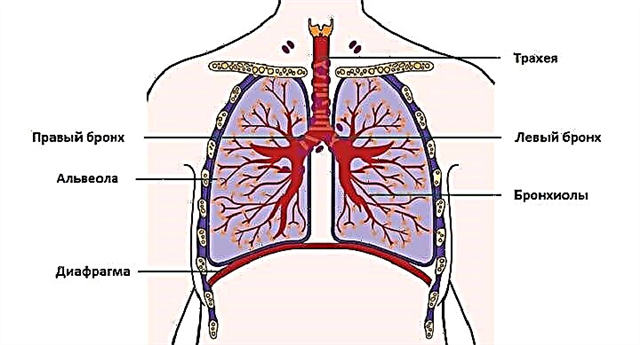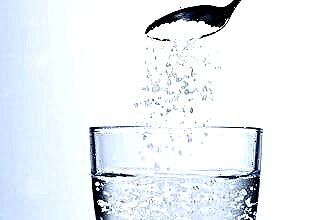Finding a tumor near the ear, some people describe it as follows: "A lump appeared near the ear at the junction of the lower and upper jaws - it does not hurt, does not bother with eating, the temperature does not rise." More often, however, with the same localization, there is some soreness of the lump near the ear and a feeling of movement of the "ball" on palpation. In a similar way, a tumor can be described that has arisen in front of the tragus (cartilaginous protrusion in the anterior part of the auricle) and slightly above - in the region of the temple.
Swollen lymph nodes as a sign of inflammatory processes
 The first thing that doctors admit is an increase in lymph nodes against the background of an inflammatory process, which implies an examination with suspicion of a number of diseases. However, in addition to an increase in lymph nodes, without a visual examination, both a furuncle and an atheroma are necessarily considered as options. And edema of the auricle in an adult includes perichondritis in the list of possible pathologies.
The first thing that doctors admit is an increase in lymph nodes against the background of an inflammatory process, which implies an examination with suspicion of a number of diseases. However, in addition to an increase in lymph nodes, without a visual examination, both a furuncle and an atheroma are necessarily considered as options. And edema of the auricle in an adult includes perichondritis in the list of possible pathologies.
In the parotid region, there is a whole group of lymph nodes: preauricular, parotid, tonsillar, posterior. All of them are part of the lymphatic network: the posterior nodes collect lymph in the temporal and parietal regions and interact with the nodes located in the cervical salivary gland, as well as the parotid nodes. The network acts as a natural barrier to toxins and infections, but in children, due to the structural immaturity of the lymphatic system, inflammation occurs much more often than in adults - the lymph nodes are devoid of septa and a dense connecting capsule, which facilitates the penetration of infection and contributes to the development of lymphadenitis.
Causes of the disease and areas of infection
Lymph nodes in the parotid region are less likely to become infected than axillary, inguinal, cervical and submandibular, however, the appearance of a lump above and in front of the ear may mean that the lymph node is inflamed. In the parotid region, its increase in size is much more common with damage to the lymphatic system as a whole, which occurs with rubella, measles, infectious mononucleosis, as well as with the occurrence of adenovirus infection and lymphoma.
 Isolated lymphadenitis can also occur as a result of mechanical damage that contributes to the penetration of infection: scratches from the paws of pets, wounds and abrasions, a bite in the temporal zone by an encephalitis tick. Among other reasons:
Isolated lymphadenitis can also occur as a result of mechanical damage that contributes to the penetration of infection: scratches from the paws of pets, wounds and abrasions, a bite in the temporal zone by an encephalitis tick. Among other reasons:
- boils,
- otitis media (external and middle),
- mastoiditis - inflammation of the porous structures of the temporal bone in the part of the mastoid process and the mucous membrane of the antrum,
- lymphogranulomatosis, or Hodgkin's disease - a tumor disease of the lymphatic system,
- tularemia is a zooanthroponous infection caused by the bacterium Francisella tularensis,
- tuberculosis and, in extremely rare cases, syphilis.
Parotid lymph nodes can be infected from a variety of sources. This criterion allows you to form a classification of lymphadenitis:
- otogenic - provoked by the spread of infection from the structures of the ear,
- rhinogenic - from infectious sources in the nasal cavity,
- tonsilogenic - with the center of distribution in the tonsils of the nasopharynx,
- odontogenic - develops from the oral cavity,
- dermatogenic - associated with damage to the skin in the parietal and temporal regions.
However, despite the importance of this information for further treatment, in 50% of cases, it is not possible to definitely establish the infectious source.
Clinical manifestations
Lymphadenitis is an inflammatory reaction following the destruction of the structure of the node, which is characterized by the following symptoms:
 Swelling and swelling near the ear. A visible manifestation of edema is an increase in the size of the node and the appearance of a lump near the auricle. In addition, dysfunction of the lymphatic system can provoke lymph retention, which leads to puffiness.
Swelling and swelling near the ear. A visible manifestation of edema is an increase in the size of the node and the appearance of a lump near the auricle. In addition, dysfunction of the lymphatic system can provoke lymph retention, which leads to puffiness.- Pain. It occurs as a result of the compression of nerve receptors in the skin and tendons by edema. The sensitivity of the receptors increases due to the effect of biologically active substances released during the destruction of the cell. During this period, the pain can be pulsating and bursting. Then the sensitivity decreases and is felt only when pressing on the node or when feeling the site of inflammation.
- Hyperemia. It is visually detected by reddening of the skin over the enlarged node, which is associated with the expansion of blood vessels and stagnation of blood.
- Local temperature rise. Increased blood flow and activation of the cellular process leads to an increase in the temperature of the integument in the affected area.
Depending on how the disease develops, various clinical manifestations are observed, both acute and chronic.
 Chronic productive type. The "cone" grows slowly and almost imperceptibly for several months (2-3). The course of the process can either accelerate or slow down, but the tumor does not completely subside. The appearance of the skin remains unchanged, and the tissue is not soldered to the underlying. The lymph node is mobile and, when pressed, causes little or no pain.
Chronic productive type. The "cone" grows slowly and almost imperceptibly for several months (2-3). The course of the process can either accelerate or slow down, but the tumor does not completely subside. The appearance of the skin remains unchanged, and the tissue is not soldered to the underlying. The lymph node is mobile and, when pressed, causes little or no pain.- Chronic abscessing type. The next stage in the development of the disease. In the thickness of the lymph node, a limited cavity filled with pus appears. The lump becomes denser, becomes painful and begins to grow together with the underlying tissues, which reduces its mobility. The general condition of the patient against the background of intoxication also worsens.
- Acute serous-purulent type. The inflamed soft, elastic lymph node increases to one and a half to two centimeters, which is almost not accompanied by painful sensations and does not affect the condition of the skin (slight redness may occur). Both the "ball" itself and the skin are not soldered to the underlying tissues, they are mobile.
- Acute purulent type. Associated with an abscess (filling with pus of an organic area). Soreness is moderate to severe. The skin over the formation turns red, and the soft tissues around it swell. The "lump" itself gradually loses its mobility, soldering with the underlying tissues. At the same time, the general well-being of the patient practically does not undergo any changes.
- Acute adenophlegmon. A form of the disease that occurs when pus flows out of the capsule into the surrounding areas. It is accompanied by intense throbbing pain that is diffuse in nature. The general condition is also deteriorating (fever, weakness, aches, lack of appetite).
Lymphadenitis treatment
The treatment of lymphadenitis begins with the identification and elimination of the source of the spread of infection, which involves anti-inflammatory and antibiotic therapy using broadly acting antibiotics (sulfonamides, cephalosporins).
However, if after the procedures carried out, the condition and size of the "bump" have not changed, the doctor's attention should be focused on this fact.
 Treatment is accompanied by the use of drugs that:
Treatment is accompanied by the use of drugs that:
- reduce acute and chronic inflammation (antihistamines),
- harmonize the immune response (immunomodulators),
- activate immune cells (vitamin complexes, in particular those containing vitamin C).
In parallel with this, in acute serous and chronic forms, physiotherapeutic procedures are carried out, including:
- anti-tissue electrophoresis using proteolytic enzymes,
- helium-neon laser irradiation,
- exposure to ultra-high electromagnetic wave.
Purulent forms of the disease are treated surgically by opening the capsule, removing pus from it and antiseptic rinsing. When suturing, a drainage is left to drain exudate and pus.
Furuncle
 Acute purulent inflammation can be localized in the hair follicle or spread to the area of the skin and subcutaneous retina. Its pathogens - staphylococcus streptococci - are normally always present on the skin, but in the case of a decrease in local immunity, peaceful coexistence develops into pathology. A decrease in immunity in this case can occur with chronic otitis media, but microcracks or scratches, due to a violation of the barrier, can also open the way for pathogenic flora.
Acute purulent inflammation can be localized in the hair follicle or spread to the area of the skin and subcutaneous retina. Its pathogens - staphylococcus streptococci - are normally always present on the skin, but in the case of a decrease in local immunity, peaceful coexistence develops into pathology. A decrease in immunity in this case can occur with chronic otitis media, but microcracks or scratches, due to a violation of the barrier, can also open the way for pathogenic flora.
The bacterium invades the hair follicle near the auricle, causing redness and slight swelling. A distinctive feature of the boil here is a painful reaction to pressing or pulling the skin around inflammation. A ripe boil looks like a conical elevation. Sometimes a rod can be seen through the translucent skin.
The whole process - from bacterial infection to the maturation of inflammation with the release of pus to the outside - takes about a week. However, if during this period the boil did not open naturally, you should not artificially accelerate the process yourself, since squeezing out pus, as a rule, is accompanied by the spread of infection to neighboring zones.
Medical assistance is provided in three areas:
- General strengthening treatment.
- Suppression of the activity of microorganisms. In this case, antiseptics and antibacterial drugs are used in the form of emulsions and solutions (local therapy) or in the form of tablets and injections of antibiotics (in case of complications) - for example, semi-synthetic penicillins: cloxacillin, dicloxacillin, amoxiclav. In case of intolerance to penicillins, macrolides (azithromycin, erythromycin) are prescribed, and with increased resistance of the microorganism - cephalosporins and quinols of the last generation.
- Surgical intervention. It is safer to produce it in a hospital setting using local anesthesia. After the incision and removal of the pus and the rod, the cavity is treated with 5% iodine.
Atheroma (wen)
 The disease is a benign globular formation resulting from a blockage of the sebaceous gland. It is typical mainly for middle-aged people (from 25 to 50 years old). As the clogged gland continues to produce secretion, the "lump" is constantly growing in size, without treatment reaching a size of several centimeters. In the absence of infection, the wen does not hurt, has clear boundaries with a smooth surface and is mobile on palpation. Atheroma is characterized by an enlarged excretory duct in the center of the "bump".
The disease is a benign globular formation resulting from a blockage of the sebaceous gland. It is typical mainly for middle-aged people (from 25 to 50 years old). As the clogged gland continues to produce secretion, the "lump" is constantly growing in size, without treatment reaching a size of several centimeters. In the absence of infection, the wen does not hurt, has clear boundaries with a smooth surface and is mobile on palpation. Atheroma is characterized by an enlarged excretory duct in the center of the "bump".
If the cyst begins to hurt (stronger - when touched), this indicates the onset of the inflammatory process. Its signs are an increase in temperature, an increase in blood circulation, but it is easier and safer to get rid of a wen in the pre-infectious period. To remove the cyst, a surgical operation is performed using:
- radio wave method, in which high-frequency waves evaporate the contents of the wen without burning the surrounding tissues,
- laser moxibustion,
- traditional surgical excision.
All traditional methods (including an attempt to squeeze out a cyst) are regarded as unsafe, harmful to health.
Edema of the auricle
 If it is swollen around the ear with the spread of edema to the auricle, the likelihood of perichondritis is high. When diagnosing, one should pay attention to the characteristic features of this disease:
If it is swollen around the ear with the spread of edema to the auricle, the likelihood of perichondritis is high. When diagnosing, one should pay attention to the characteristic features of this disease:
- discomfort when touching the auricle,
- swelling and swelling that spreads to all areas except the lobe,
- pain in the ear, followed by the discharge of pus.
Perichondritis is the general name for diseases associated with damage to the perichondrium, inflammation of the cartilage of the middle ear. The causative agents are Pseudomonas aeruginosa (more often), streptococcus, staphylococcus. The infection can penetrate both from the outside through the skin with impaired integrity (primary), and from the inside, with the blood flow, moving from the infected organs (secondary). Insects, pets, cold and hot temperatures, piercings and cosmetic surgeries can cause injury. The risk of perichondritis increases with any chronic diseases and infectious processes.
With two different forms of the disease - serous and purulent - the symptomatology has its own specifics.
- With a serous form:
- glossy shine of the shiny surface of the auricle,
- first an increasing and then a decreasing swelling, turning into a painful induration,
- local increase in skin temperature.
 With a purulent form:
With a purulent form:
- puffiness is uneven and bumpy, extending to the area of the shell where there is cartilaginous tissue,
- with the development of the process, the redness acquires a bluish tint,
- localized pain on palpation transforms into diffuse, passing to the temples, back of the head and neck,
- up to 38 0Body temperature rises.
With the help of diaphanoscopy (tissue transillumination), perichondritis is first distinguished from other diseases with similar manifestations in the early stages (for example, from erysipelas). Then, when the diagnosis is confirmed, they switch to systemic treatment with antibiotics and anti-inflammatory drugs. Moreover, depending on the pathogen, the selection of funds will differ.
For example, Pseudomonas aeruginosa is suppressed by tetracycline erythromycin, oxytetracycline, streptomycin, polymyxin, etc., since it is insensitive to penicillin.
With a serous form, physiotherapeutic procedures are carried out, which are contraindicated in a purulent form. In the first case, conservative treatment is often sufficient, in the second, drug treatment is possible only in the early stages, and in the next stages, surgical intervention is indicated.

 Swelling and swelling near the ear. A visible manifestation of edema is an increase in the size of the node and the appearance of a lump near the auricle. In addition, dysfunction of the lymphatic system can provoke lymph retention, which leads to puffiness.
Swelling and swelling near the ear. A visible manifestation of edema is an increase in the size of the node and the appearance of a lump near the auricle. In addition, dysfunction of the lymphatic system can provoke lymph retention, which leads to puffiness. Chronic productive type. The "cone" grows slowly and almost imperceptibly for several months (2-3). The course of the process can either accelerate or slow down, but the tumor does not completely subside. The appearance of the skin remains unchanged, and the tissue is not soldered to the underlying. The lymph node is mobile and, when pressed, causes little or no pain.
Chronic productive type. The "cone" grows slowly and almost imperceptibly for several months (2-3). The course of the process can either accelerate or slow down, but the tumor does not completely subside. The appearance of the skin remains unchanged, and the tissue is not soldered to the underlying. The lymph node is mobile and, when pressed, causes little or no pain. With a purulent form:
With a purulent form:

